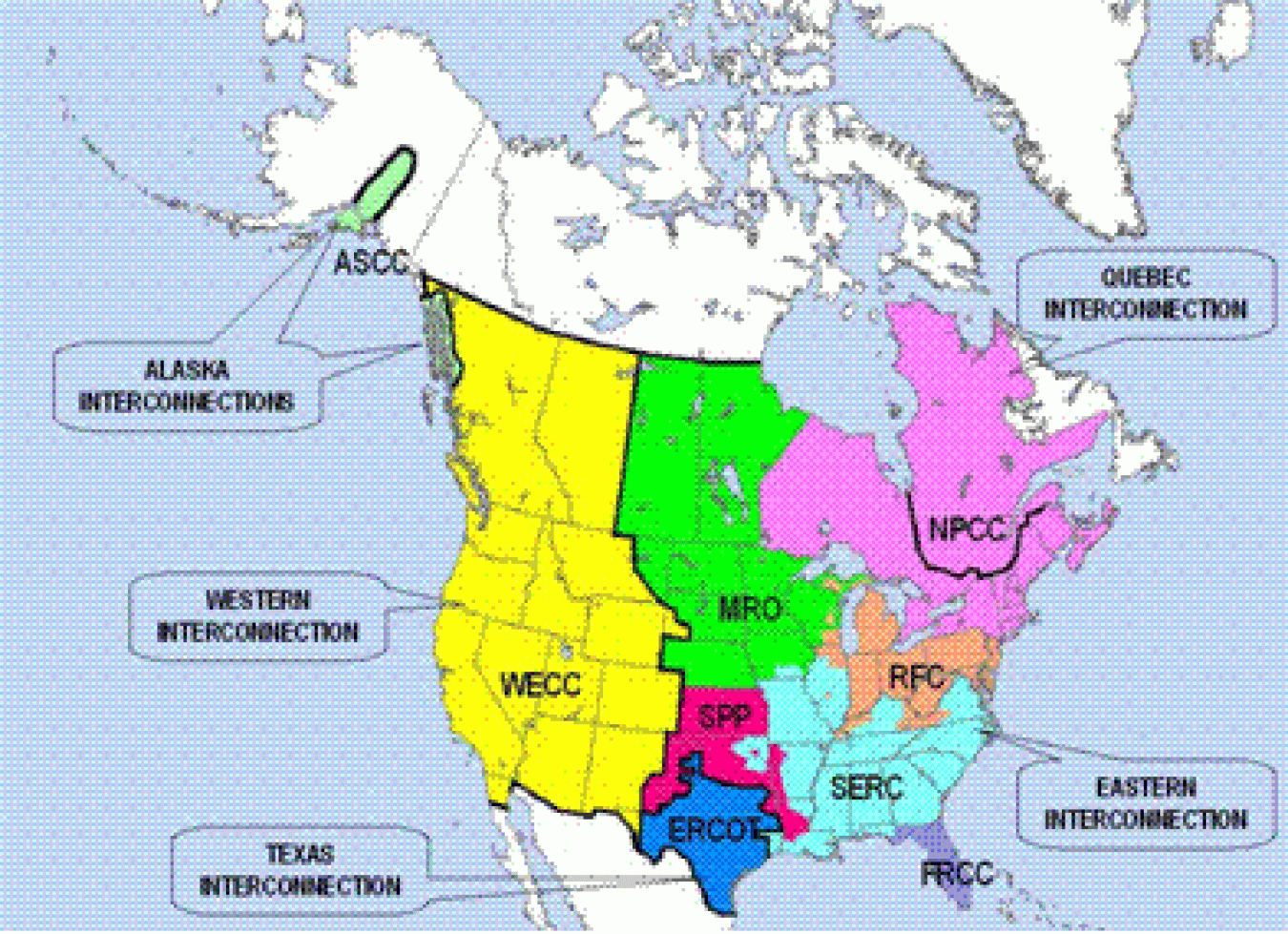
EASTERN INTERCONNECTION
North America is comprised of two major and three minor alternating current (AC) power grids or “interconnections.” The Eastern Interconnection reaches from Central Canada Eastward to the Atlantic coast (excluding Québec), South to Florida and West to the foot of the Rockies (excluding most of Texas). All of the electric utilities in the Eastern Interconnection are electrically tied together during normal system conditions and operate at a synchronized frequency operating at an average of 60Hz. Click here for more information.
DOE is in the process of issuing awards to two entities in the Eastern Interconnection: one to the Eastern Interconnection Planning Collaborative (“Topic A”) and a second to the Eastern Interconnection States’ Planning Council (“Topic B”). These entities will work collaboratively to develop a portfolio of long-term electricity supply futures, estimate their associated transmission requirements, and prepare long-term interconnection-wide transmission plans. Presently, DOE continues to negotiate with the two selectees in order to reach final awards with the Eastern Interconnection Planning Collaborative and the Eastern Interconnection States' Planning Council.
WESTERN INTERCONNECTION
North America is comprised of two major and three minor alternating current (AC) power grids or “interconnections .” The Western Interconnection stretches from Western Canada South to Baja California in Mexico, reaching eastward over the Rockies to the Great Plains. All of the electric utilities in the Western Interconnection are electrically tied together during normal system conditions and operate at a synchronized frequency operating at an average of 60Hz. Click here for more information.
DOE has issued awards to two entities in the Western Interconnection: one to the Western Electricity Coordinating Council (Regional Transmission Expansion Planning) (“Topic A”) and a second to the Western Governors’ Association (State and Provincial Steering Committee) (“Topic B”). These entities will work collaboratively to develop a portfolio of long-term electricity supply futures, estimate their associated transmission requirements, and prepare long-term interconnection-wide transmission plans.
TEXAS INTERCONNECTION
North America is comprised of two major and three minor alternating current (AC) power grids or “interconnections.” The Texas Interconnection covers most of the state of Texas. All of the electric utilities in the Texas Interconnection are electrically tied together during normal system conditions and operate at a synchronized frequency operating at an average of 60Hz. Click here for more information.
DOE has issued two awards to one entity in the Texas Interconnection: both to the Electric Reliability Council of Texas (ERCOT) for both Topics A and B. ERCOT will work collaboratively with utilities, generation developers, state agencies, non-governmental organizations and others to develop a portfolio of long-term electricity supply scenarios, estimate their associated transmission requirements, and prepare long-term interconnection-wide transmission plans.

